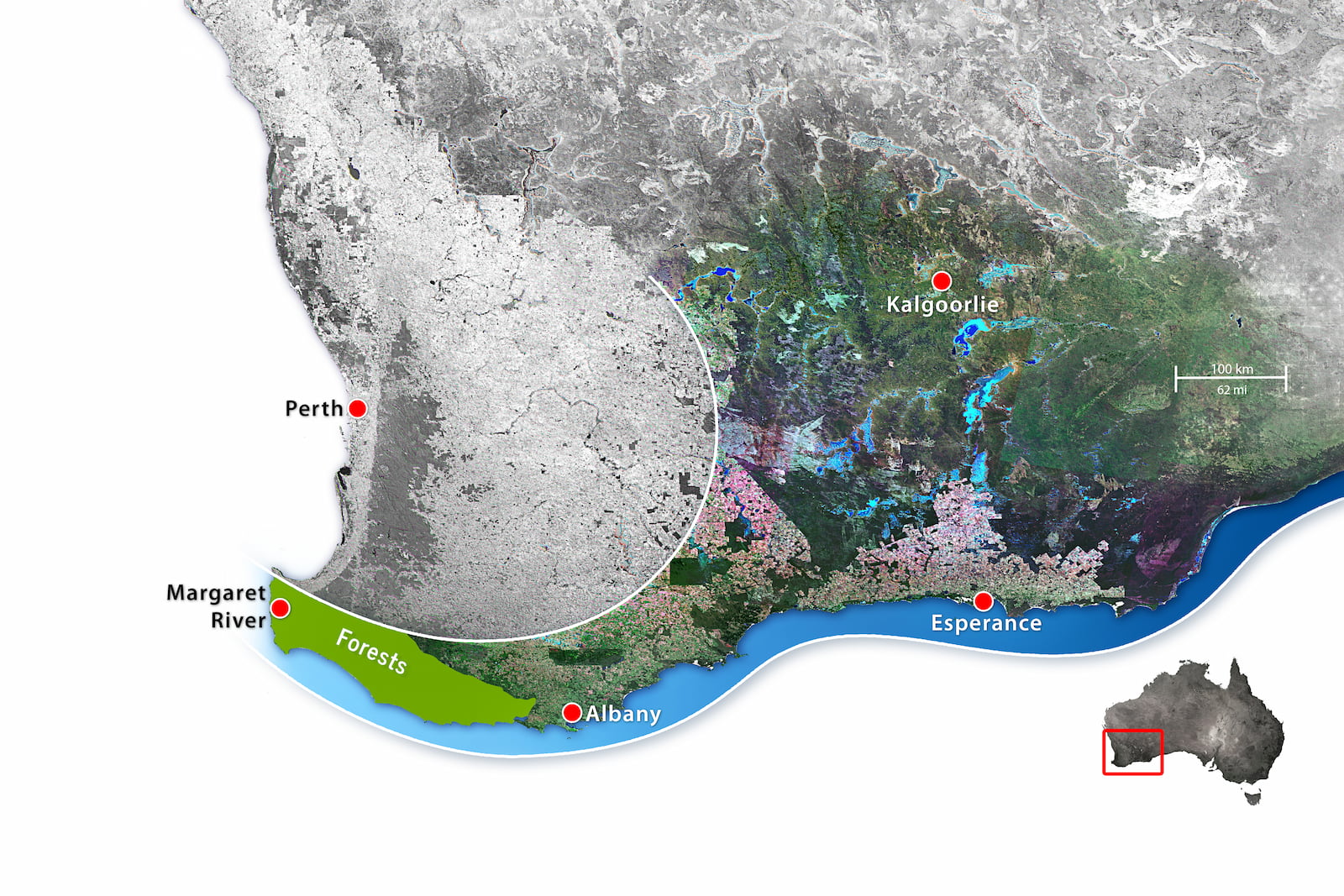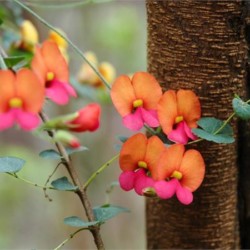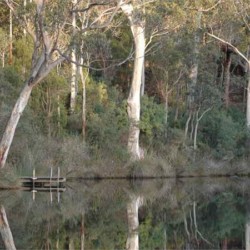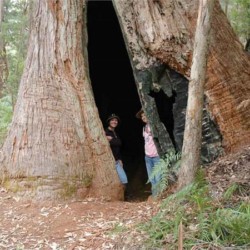The forest zone of Gondwana Link is broadly defined by the 750mm rainfall isohyet and includes the tall karri, tingle, jarrah and marri forests.

Our vision
In WA’s far south-west corner are the wet forests. For Gondwana Link the forest zone of is broadly defined by the 750mm rainfall isohyet and includes the tall karri, tingle, jarrah and marri forests. These four main eucalypts grow nowhere else on earth but this south-west corner.
Natural values
The forest zone includes many iconic forest conservation areas, such as the Walpole Wilderness Area and Shannon-D’Entrecasteaux National Park. The zone features WA’s tallest forests as well as more cryptic wonders such as the endemic white-bellied and sunset frogs.
Much of this zone is within public land, with some areas still being logged. There are considerable areas of pasture for stock grazing, and a rapidly growing horticulture sections, as well some plantation forests. Tourism and specialty visitor services are increasing important economically.
Stresses
Horticultural use is increasing, a trend likely to continue and already there are significant plans to extract water from the forest systems. Urban and small holder expansion, although limited by the State Forests and reserved areas, is exerting pressure particularly around Margaret River and the southern coastal areas and is also expected to continue to increase as the Perth area becomes hotter, drier and less liveable in future.
Key current stresses to the forest ecosystems of south-western Australia include:
- Climate change and decreasing winter rainfall;
- Phytophthora dieback;
- Poor fire management and in particular the excessive use of prescribed burning in forests which are much drier than they were even ten years ago – this leads to wholesale tree death, loss to fire of valuable areas like peat swamps and is considered by many to actually increase flammability;
- Recreation pressure from the population growth centres of Perth and Bunbury;
- Feral animals, pigs, foxes and cats pushing populations of endemic fauna to the brink; and
- Continued logging which has severe impacts on fauna, including on the known habitat of very rare species.
The Story so Far
That so much relatively intact forest still exists, including large areas of old growth forest, is a tribute to the efforts of many thousands of people – from the very early government foresters who resisted pressure for agricultural clearing, through to the committed activists who have objected against ongoing logging for some decades.
Organisationally, Gondwana Link has been too overstretched, to date, to have much operational focus on the forest areas. However, there are some very impressive local groups who, for many years, have done excellent work not only protecting the forest but projecting a more ecologically sustainable future for the area. Foremost amongst these is the WA Forest Alliance, while colleague groups such as Nature Conservation Margaret River and Southern Forests Community Landcare undertake more of the hands-on work.
Gondwana Link cooperates when useful with these groups. We have recently assisted the WA Forest Alliance to further develop and implement their ‘Forests for Life’ program, which aims to achieve some 40,000 ha of agroforestry – stabilising farmland and lessening sawlog pressure on native forests. We are also very impressed with their current ‘forests for climate’ campaign approach.
We are also supporting the broad coalition of scientists, concerned locals and bushfire brigade volunteers
Achievements
We cannot afford to rest on the achievements of past conservation efforts. The current forest estate, stretching from north of Denmark almost to the west coast is the foundation we are looking to build on.
Needs
We need to shift the focus of forest management from sustainable timber production to ecological needs.







